 I'm no doctor, but if a man isn't moving and isn't snoring, he's probably a corpse. 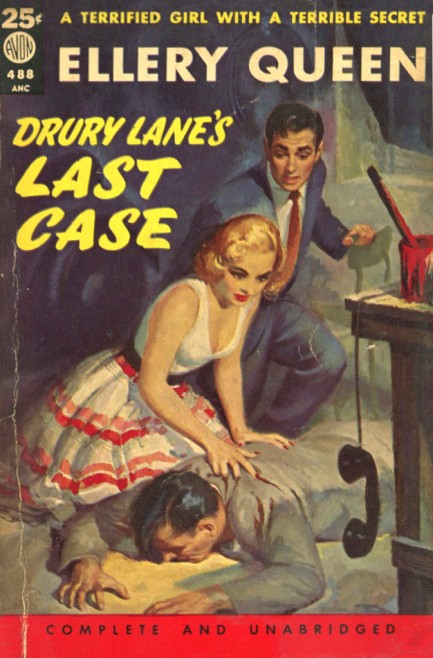
Above: a cover for Drury Lane's Last Case by Ellery Queen, who was actually Daniel Nathan partnering with Manford Lepofsky. It's originally 1933, with the above edition from Avon coming in 1952.
 For a fulfilling killing nothing beats a blade. 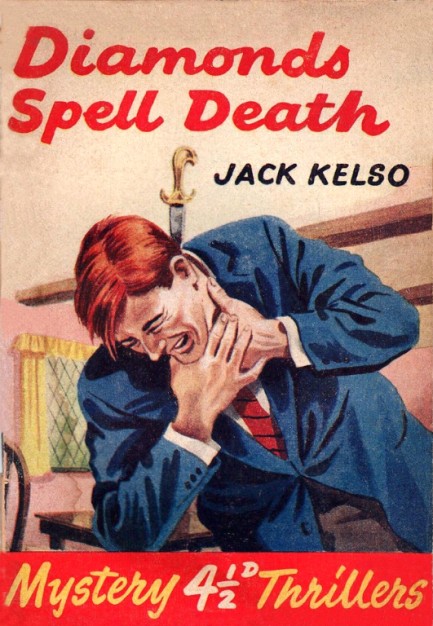
Today we have for your pleasure a collection of vintage paperback covers featuring characters on both the giving and receiving ends of knives—or knifelike tools such as icepicks. Above you see Harry Bennett art of a poor fella getting a knife from nowhere. Maybe Damocles did it. It's a funny cover because we don't think we'd grab our throats if we got stabbed in the spine, but let's hope we never find out. Below, in addition to numerous U.S. and British offerings, you'll see covers from France, Italy, Spain, and the Netherlands. There are many, many paperback fronts featuring knives—we mean hundreds—but we decided to stop ourselves at thirty-two today. These do not represent the best (as if we could decide something like that), or our favorites, but merely some interesting ones we've come across of late. If you're super interested in this particular motif we have plenty more examples in the archives. They'd be hard to find, because we don't keyword for knives, so here are some links to get you there: 1, 2, 3, 4, 5, 6, 7, 8. 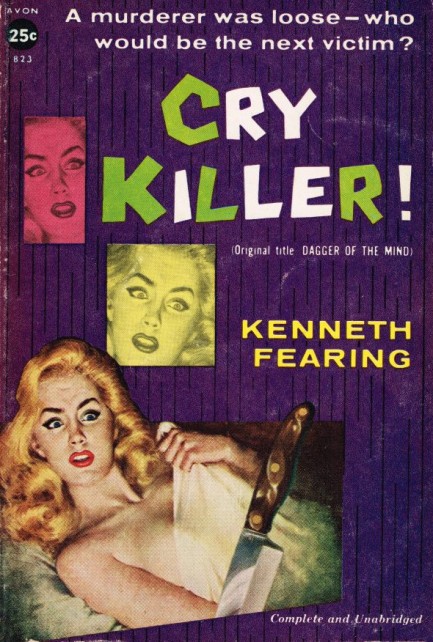 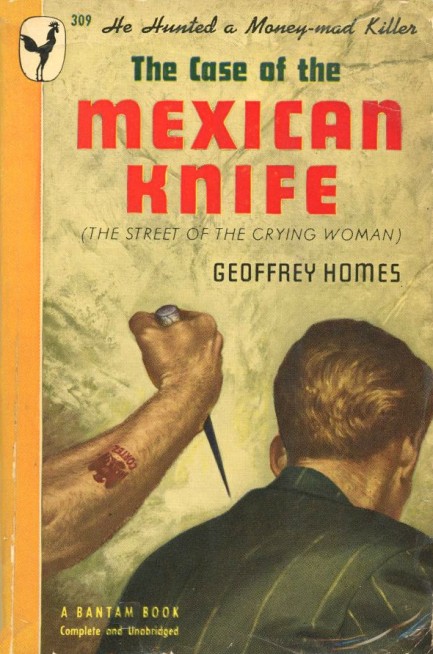 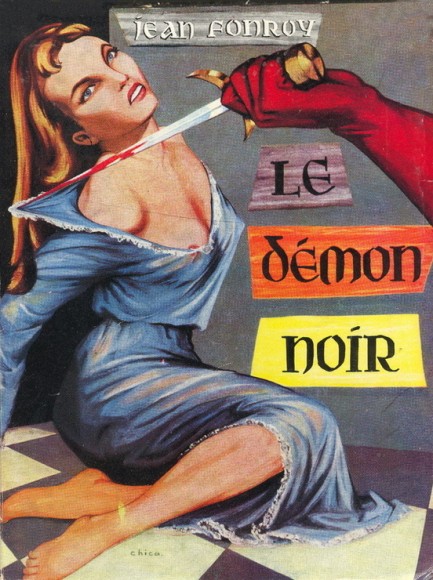 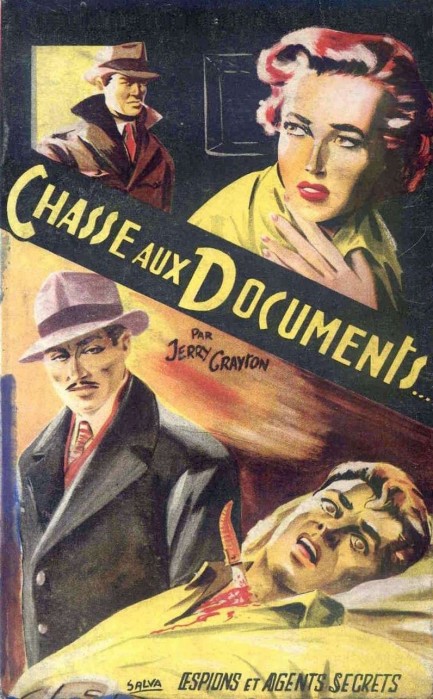 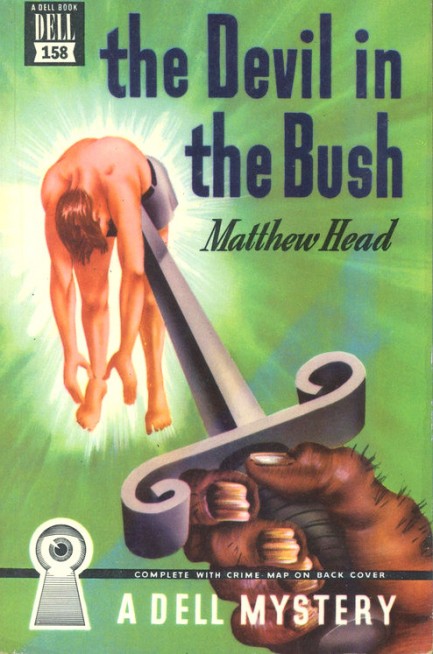 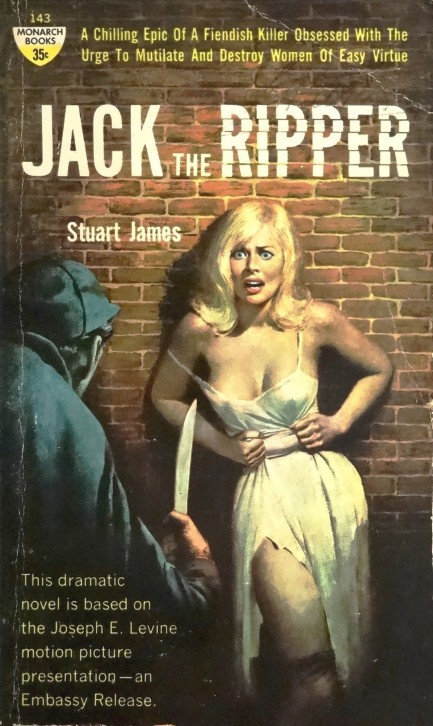 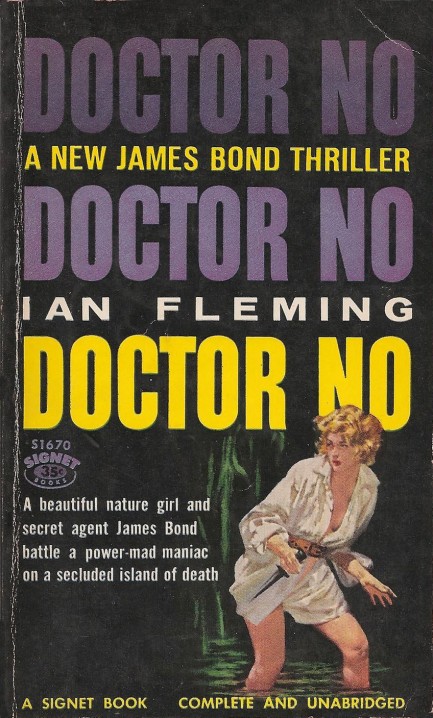 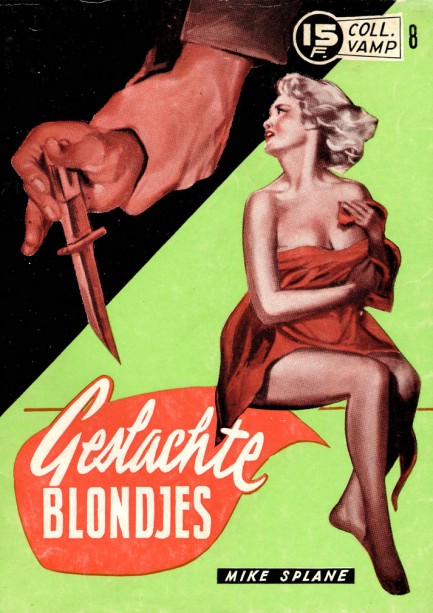 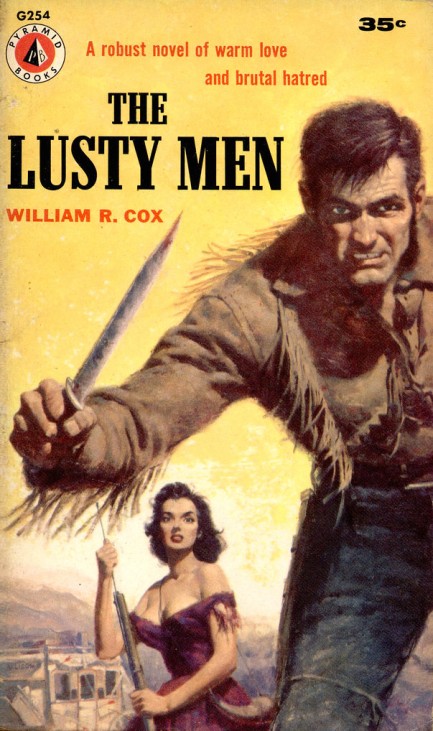 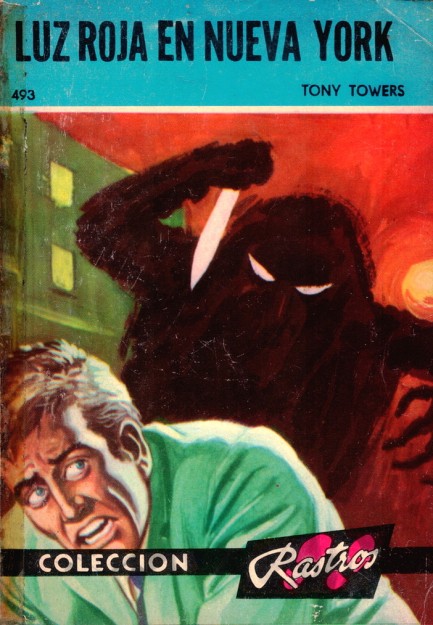 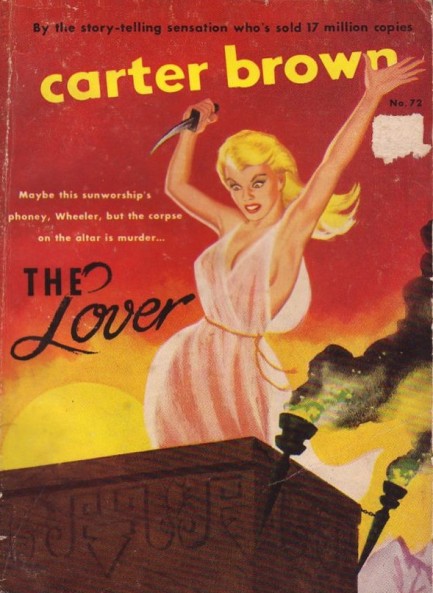 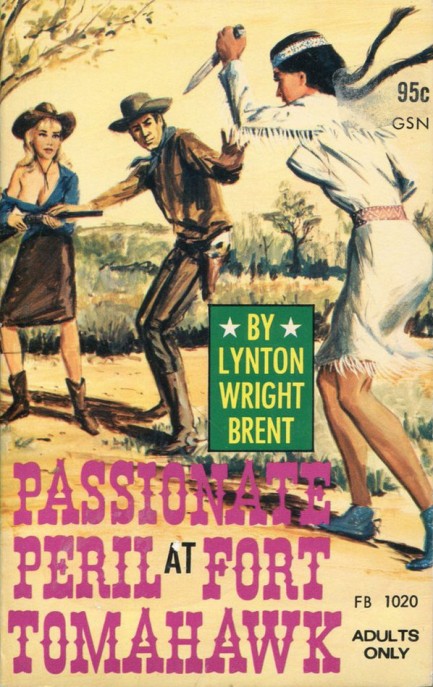 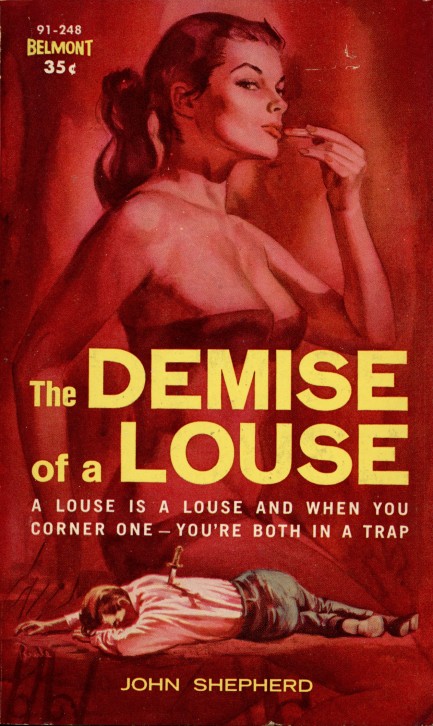 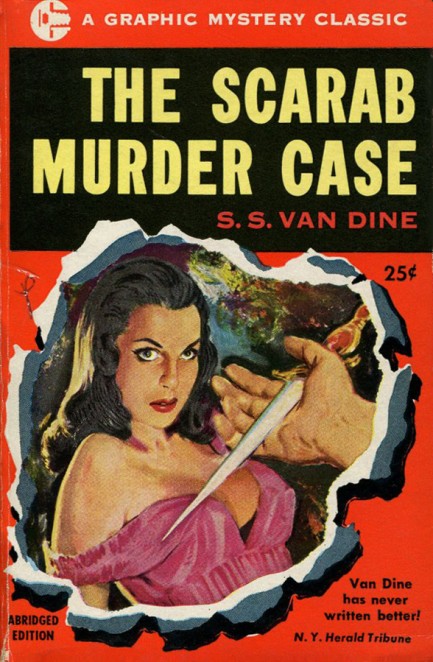 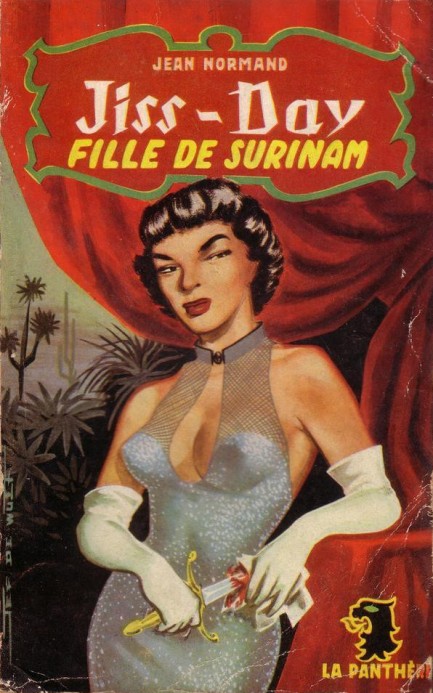 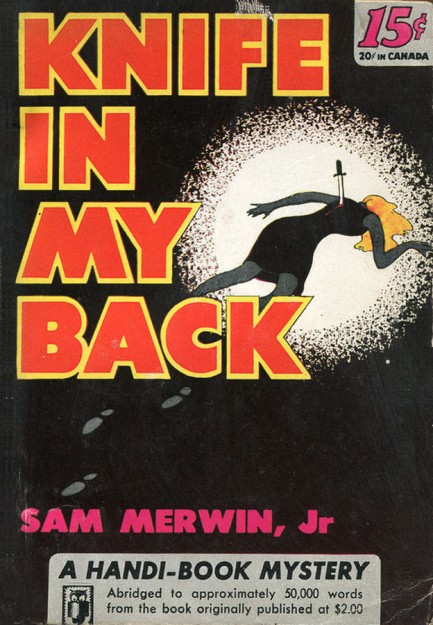 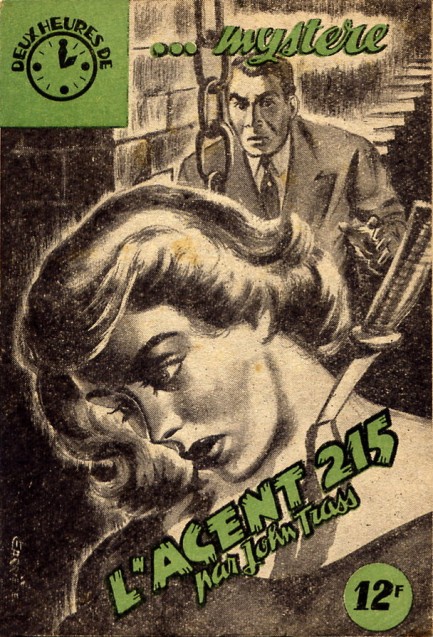 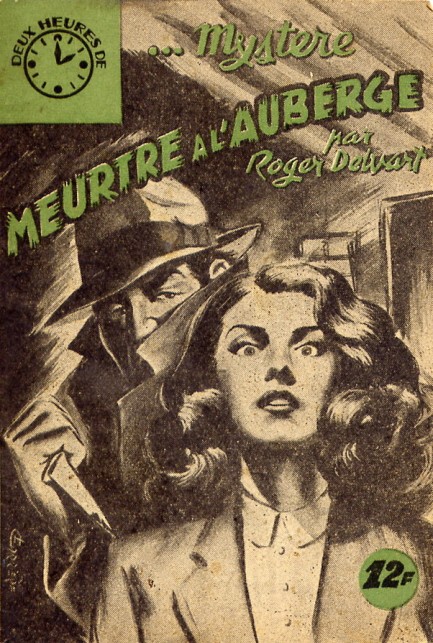 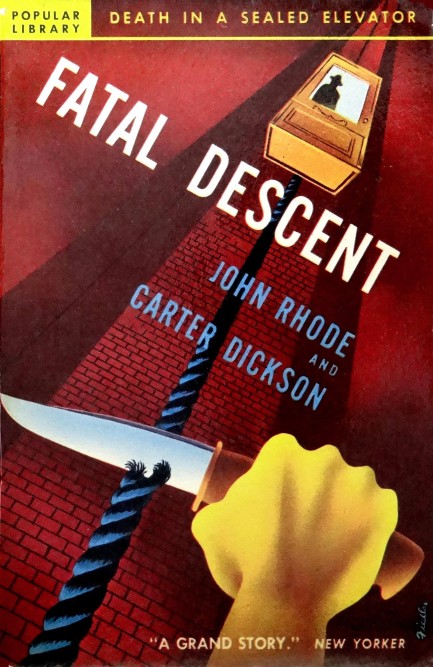 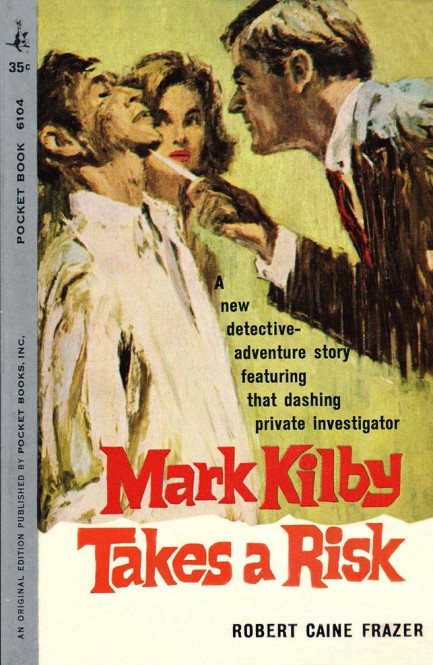 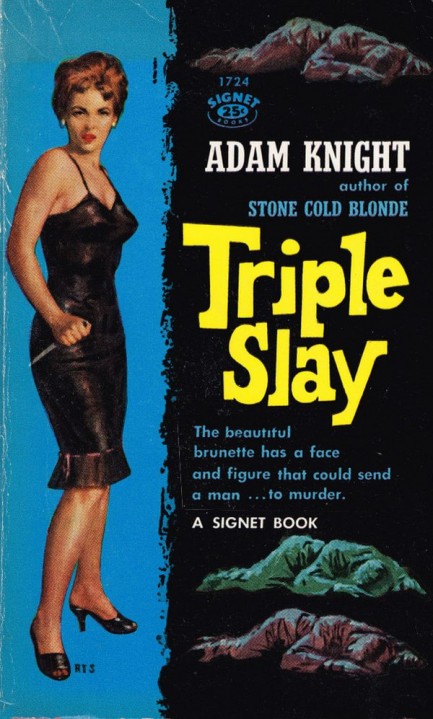 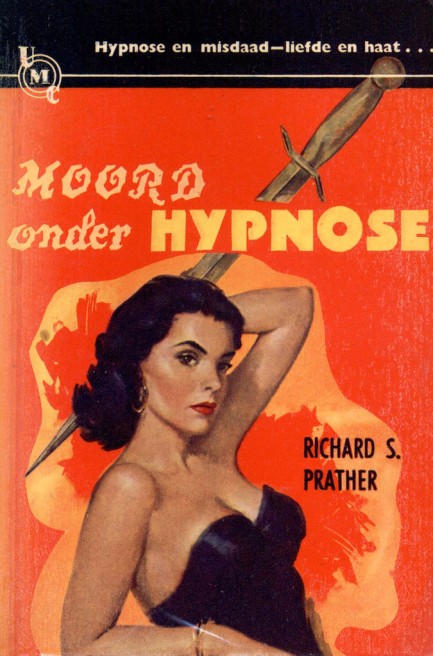 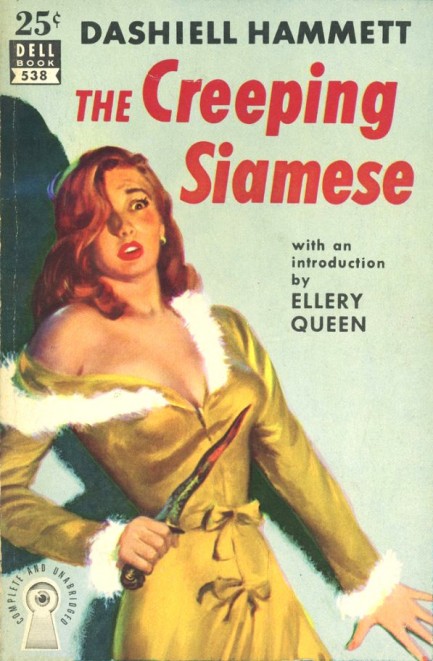 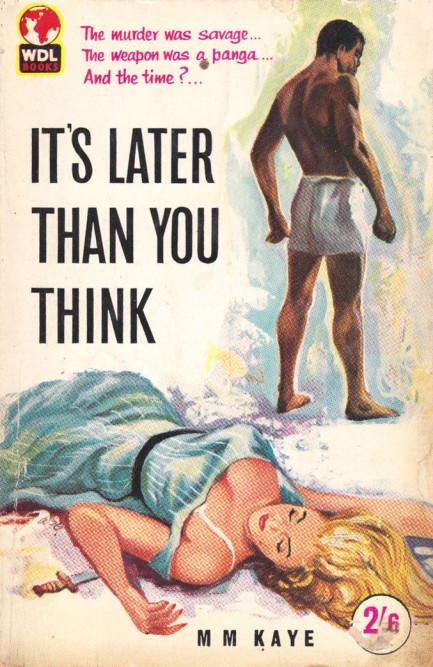 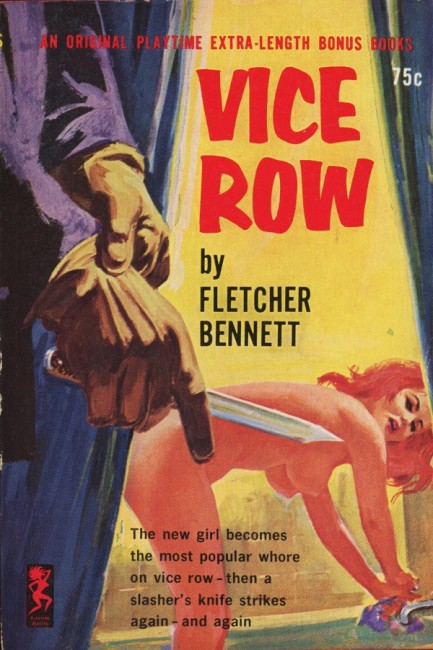 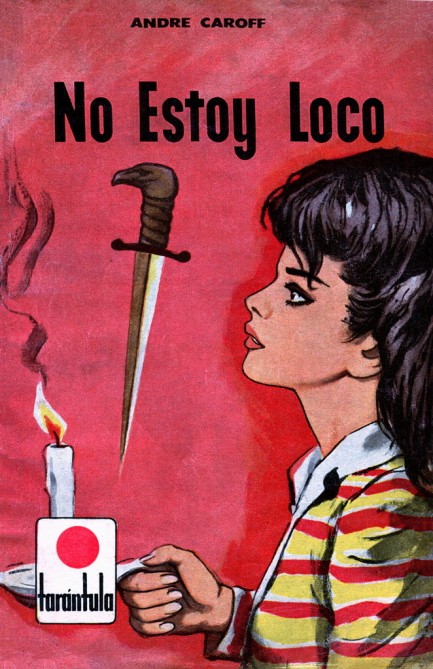 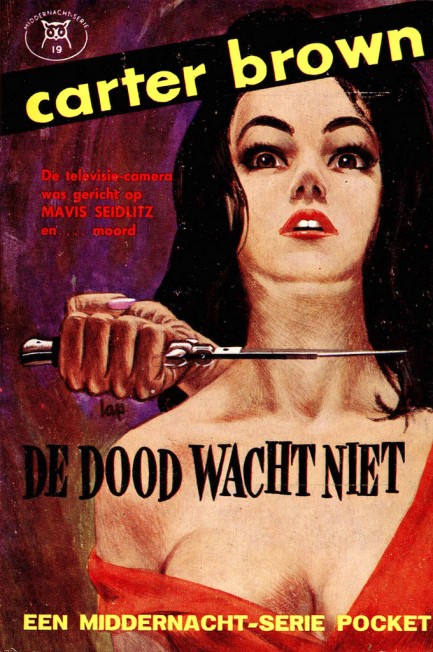 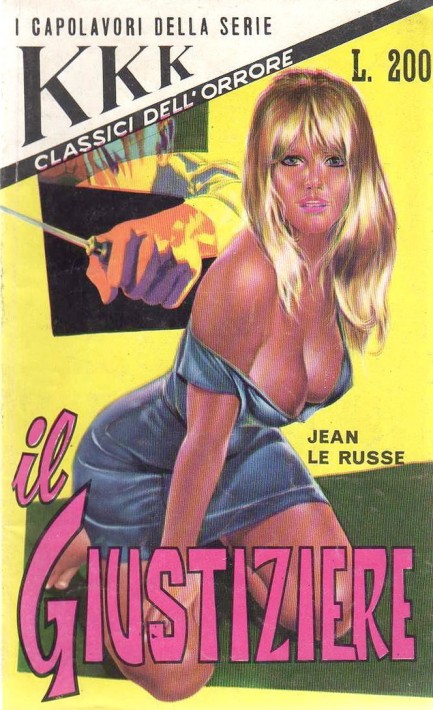 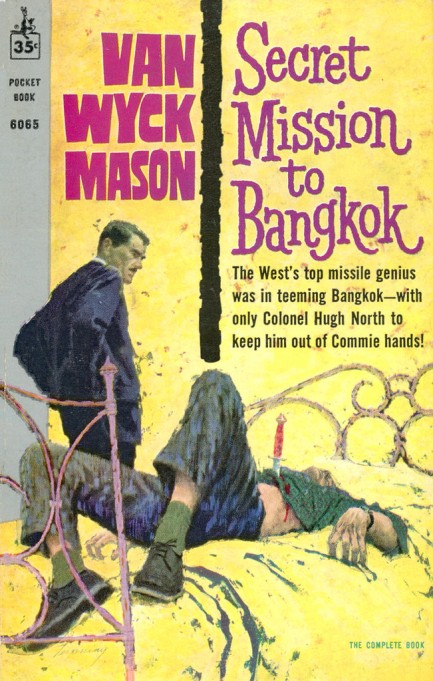 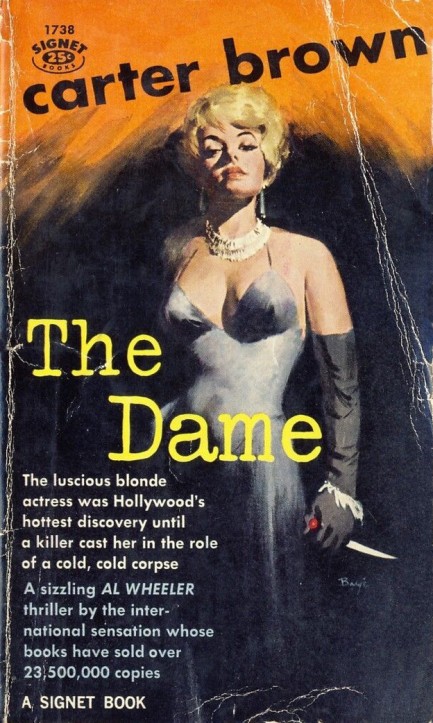 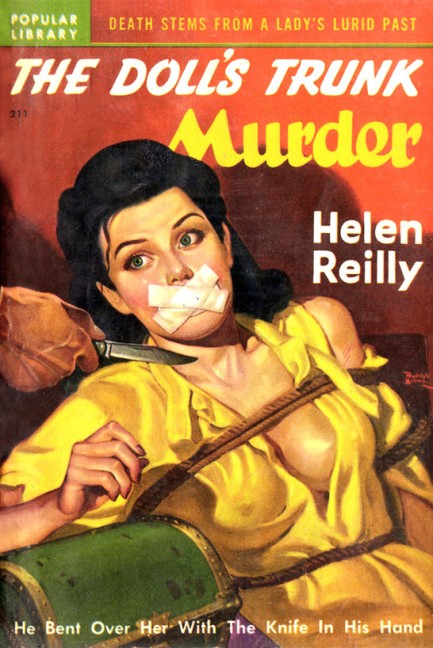
 Let me go! I can save her! I just need a good nurse, a set of woodworking tools, and a shoehorn! 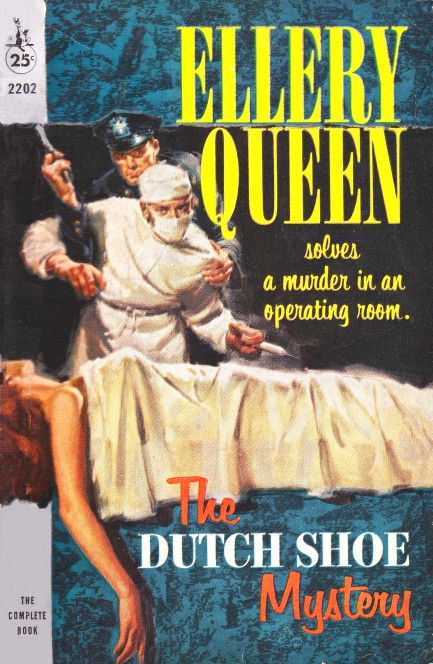
We already shared a 1952 Pocket Books cover for Ellery Queen's The Dutch Shoe Mystery, but this 1959 Pocket Books art by Jerry Allison goes a different direction, so we have a different, equally silly take on it. The Pulp Intl. girlfriends didn't get the joke last time, we suppose because they aren't old enough to know the same useless things we do, so we'll offer the reminder that a traditional Dutch shoe is made of wood and known as a clog. The Dutch Shoe Mystery features no clog that needs removal, just a ruptured gall bladder. Before the doctor can perform the operation, the patient, a millionairess who founded the hospital, is strangled with a piece of wire. Suspects: a few family members and the immediate medical staff. The “Dutch” in the title comes from the name of the hospital: Dutch Memorial. The “shoe” comes from the standard footwear of surgeons: white canvas moccasins which are the sole (oops) clue. Third in the Ellery Queen series, the authors Frederic Dannay and Manfred Bennington Lee (aka Daniel Nathan and Manford Lepofsky) basically update the classic locked room mystery by staging it in a medical facility. Good? Well, they published more than thirty subsequent Queen capers, so take that for what it's worth.
 Theories anyone? I mean, the x-ray told us there was a clog in the intestine, but it isn't even chewed. It's just weird. 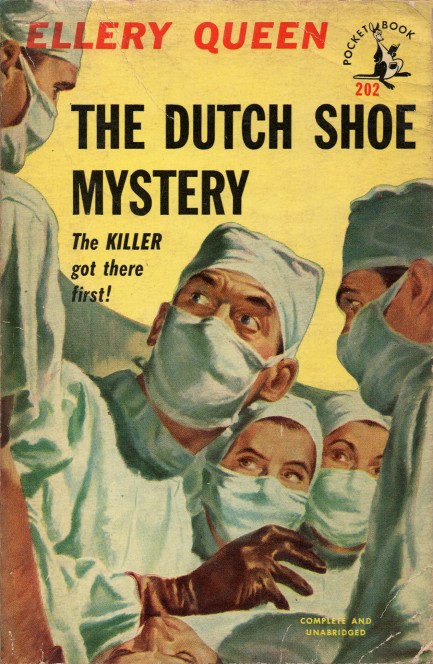
Above: a cover for Ellery Queen's The Dutch Shoe Mystery originally published in 1931, with this Pocket paperback appearing in 1952. This is one of those deals where the author and lead character were presented to audiences as the same person, but the secret got out pretty quickly that Ellery Queen was actually two guys named Frederic Dannay and Manfred Bennington Lee, but those were pseudonyms too. Their real names were Daniel Nathan and Manford Lepofsky. Maybe they wrote mysteries because they loved to mindfuck people. And the title, as well, is a bit of a misdirection—the book has nothing to do with Dutch shoes at all.
 Always digging up trouble. 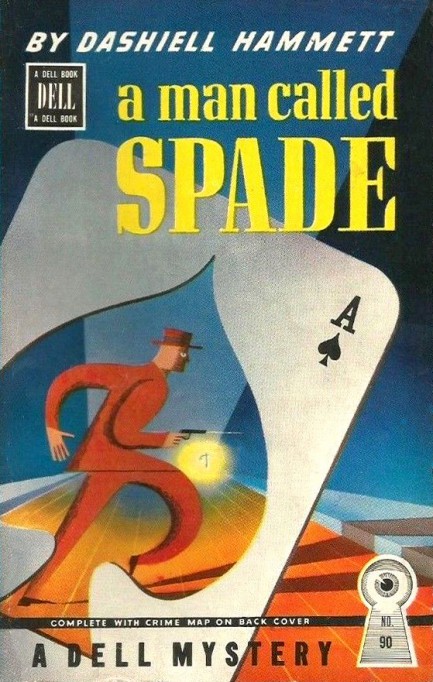 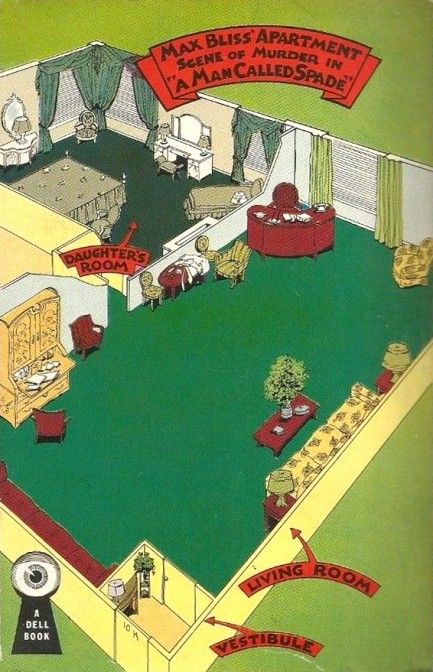
We really like this 1944 Dell paperback cover for Dashiell Hammett’s A Man Called Spade. The book contains three Sam Spade stories, plus two other tales. The art is by Gerald Gregg, an illustrator who avoided titillation in his work. While some of his pieces don’t catch the eye the way typical good girl art did, certain pieces—like this one—are really good. The map back by Ruth Belew and four-page Introduction, “Meet Sam Spade,” by Ellery Queen make this edition highly collectible.
 I’m going to burst your bubble in more ways than one, mister. 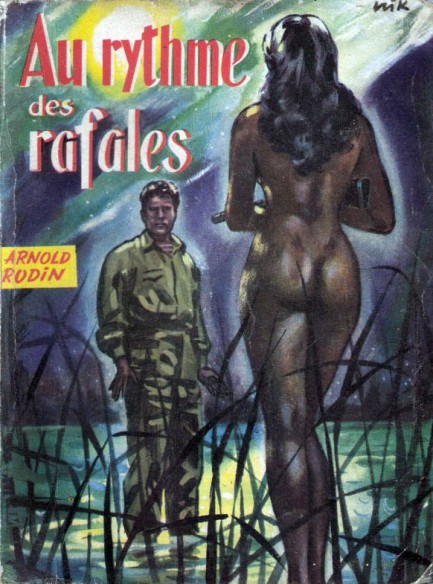
Above, a very cool cover from French illustrator Nik for Arnold Rodin’s 1954 novel Au rythme des rafales, which means “the rhythm of the bursts.” Like from a gun. So, we posted a Nik cover a while back and said we had no info on him. Turns out he’s Jacques Thibésart, who did some illustrations for Mystery Magazine, which was the French version of Ellery Queen’s Mystery Magazine. This particular cover shows the different result when a skinny dipping woman is packing heat, and not. We’ll try to locate some more Nik covers and post them in the future.
 Albert Nussbaum was good at almost everything—but what he really enjoyed was crime. 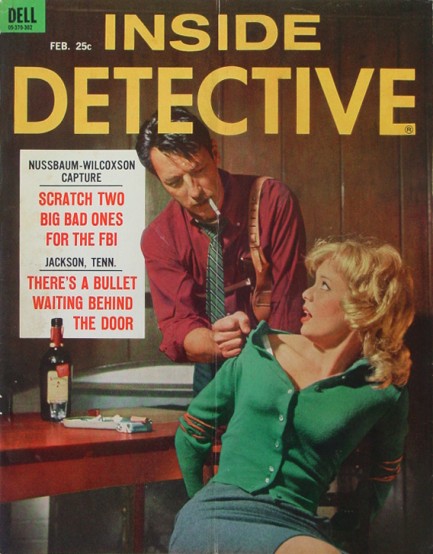
Above is an Inside Detective published February 1963, containing a feature on Albert Nussbaum and Bobby Wilcoxson, a pair of armed robbers who were among the most sought after fugitives of their time. Nussbaum was the brains of the operation, and was adept at chess and photography, and was a locksmith, gunsmith, pilot, airplane mechanic, welder, and draftsman. With his spatial and mechanical aptitude, many careers would have been available to him, but he chose instead to become a bank robber. Predictably, he was good at that too. Nussbaum and Wilcoxson knocked over eight banks between 1960 and 1962, taking in more than $250,000, which back then was the equivalent of more than two million. During a December 1961 Brooklyn robbery, Wilcoxson got an itchy trigger finger and machine-gunned a bank guard. The killing landed him on the FBI’s most wanted list. But even after the Feds distributed more than a million wanted posters and involved upwards of 600 agents in the case, they could locate neither him nor the elusive Nussbaum. The pair were just too smart.
But brains are not the same as intuition. Nussbaum was clever enough to arrange a meeting with his estranged wife right under the authorities’ noses, but apparently had no clue his mother-in-law was capable of dropping a dime on him. What followed was a 100 mph chase through the streets of Buffalo that ended only after a civilian rammed Nussbaum’s car.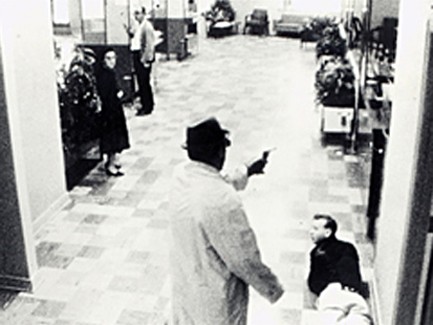 Wilcoxson was arrested soon afterward in Maryland, and both robbers were convicted of murder. But where Wilcoxson got the chair (a sentence which was commuted to life upon appeal), Nussbaum got forty years, which made him eligible for parole. Wilcoxson was arrested soon afterward in Maryland, and both robbers were convicted of murder. But where Wilcoxson got the chair (a sentence which was commuted to life upon appeal), Nussbaum got forty years, which made him eligible for parole.
Before being arrested Nussbaum had begun corresponding with mystery author Dan Marlowe, who encouraged him to put his experiences into fiction. He suddenly had plenty of time on his hands, so he wrote some short stories, and of course, he had an aptitude for that, too. With Marlowe’s help, he scored a gig writing film reviews for the Montreal magazine Take One, and after being paroled years later, wrote fiction that appeared in Ellery Queen’s Mystery Magazine, Alfred Hitchock’s Mystery Magazine, and other places. He and Marlowe eventually lived together, with Nussbaum acting as a sort of caretaker for his mentor, who was in failing health and suffering from amnesia. Marlowe died in 1987 and Nussbaum continued to write, as well as host workshops, and get himself elected president of the Southern California chapter of the Mystery Writer’s Association.
Truly, Albert Nussbaum’s story is one of the most interesting you’ll ever run across, and there’s much more to it than we covered here. Perhaps a suitable summation would be to say that before there was such a term as “street cred” Nussbaum had it in spades. His crimes resulted in a man’s death, and his later fame traded on the very experiences that led to that tragic event—unforgivable, on some level. But still, he proved that, given a second chance, some people are capable of making the most of it. Albert Nussbaum died in 1996, aged 62.
 My goodness, your playing dead has gotten so, um, convincing. 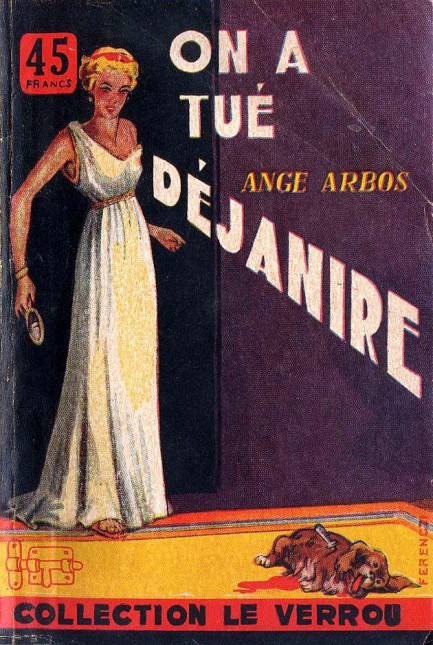
On a tué Déjanire, for which see this interesting cover above, was written for Editions Ferenczi by Ange Arbos, aka Adrien Sobra, aka Marc Agapit in 1952. Arbos was born in 1897 and wrote scores of books, as well as many short stories, the latter notably for Mystère Magazine, which was the French version of Ellery Queen’s Mystery Magazine. Arbos’ fiction was pretty dark, ranging from the Hitchcockian suspense to pure horror and fantasy. We’ll get back to him later. Today we just wanted to show you the art, which gave us a laugh. But then again, it would. We’re cat people.
 Ottoman, Ottoman, Otto mighty mighty good man. 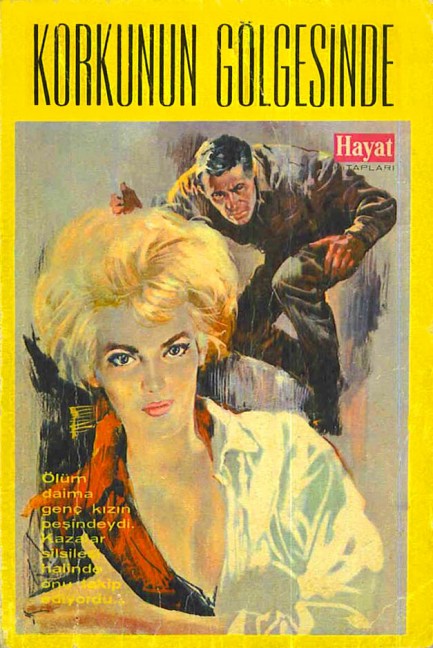 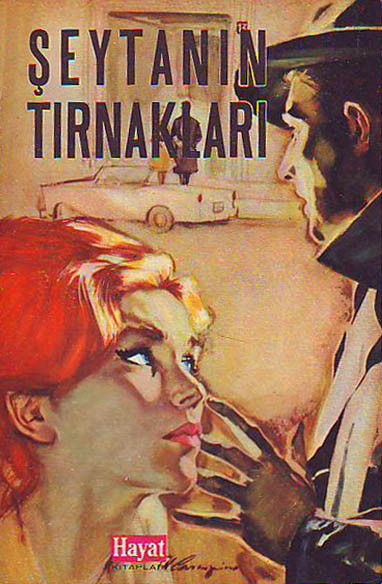 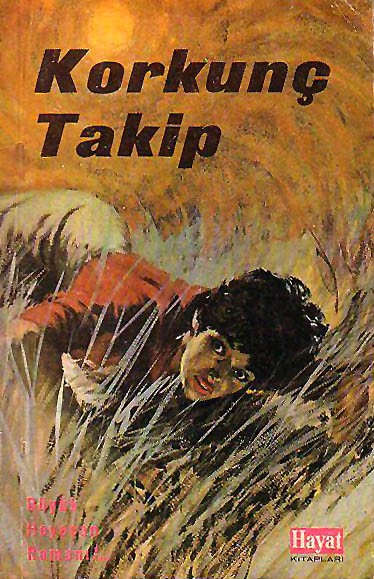 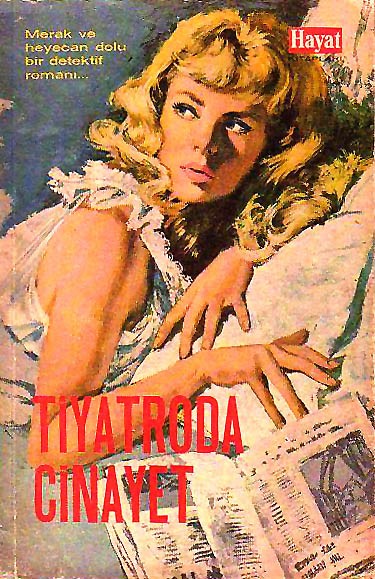 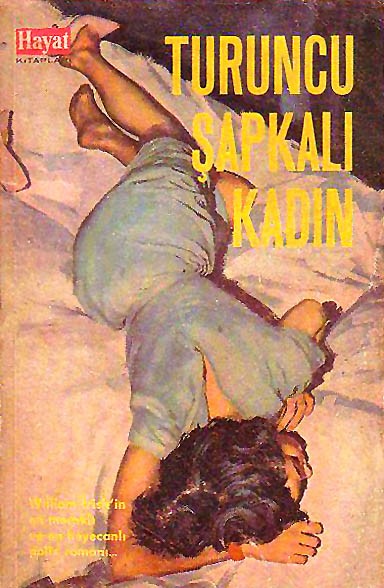 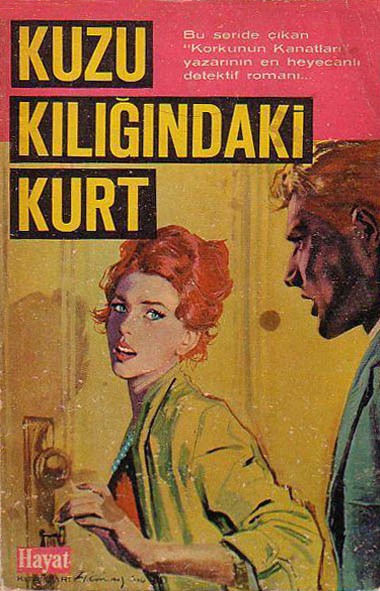 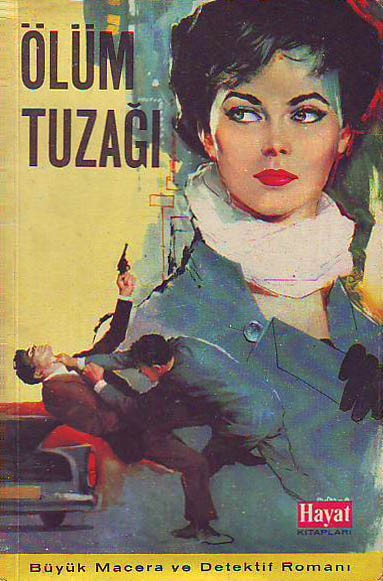  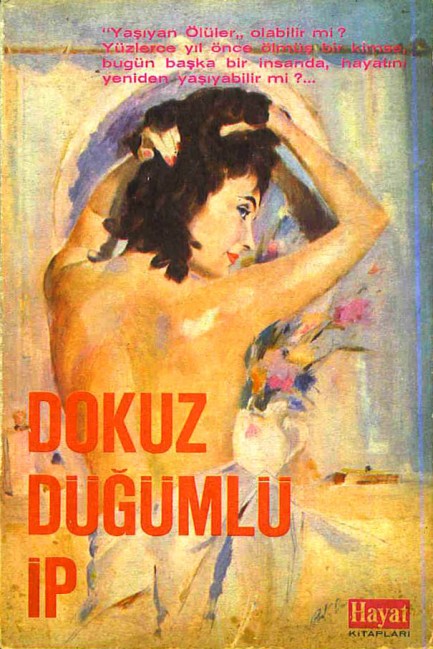 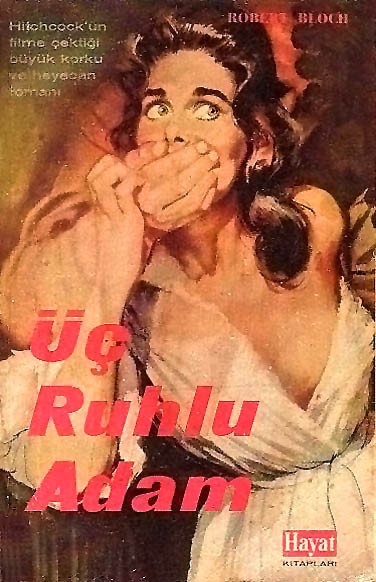
Assorted Turkish language pulps published by the pop culture magazine Hayat, circa 1960s and early 1970s. The authors are, top to bottom, Allison L. Burks, Gerald de Jean, William McGivern, Ngaio Marsh, William Irish, Mignon G. Eberhart, Nora Roberts, Ellery Queen (aka Frederic Dannay and Manfred Bennington Lee, aka Daniel Nathan and Manford Lepofsky), John Dickson Carr, and Robert Bloch.
|
 |

The headlines that mattered yesteryear.
2003—Hope Dies
Film legend Bob Hope dies of pneumonia two months after celebrating his 100th birthday. 1945—Churchill Given the Sack
In spite of admiring Winston Churchill as a great wartime leader, Britons elect
Clement Attlee the nation's new prime minister in a sweeping victory for the Labour Party over the Conservatives. 1952—Evita Peron Dies
Eva Duarte de Peron, aka Evita, wife of the president of the Argentine Republic, dies from cancer at age 33. Evita had brought the working classes into a position of political power never witnessed before, but was hated by the nation's powerful military class. She is lain to rest in Milan, Italy in a secret grave under a nun's name, but is eventually returned to Argentina for reburial beside her husband in 1974. 1943—Mussolini Calls It Quits
Italian dictator Benito Mussolini steps down as head of the armed forces and the government. It soon becomes clear that Il Duce did not relinquish power voluntarily, but was forced to resign after former Fascist colleagues turned against him. He is later installed by Germany as leader of the Italian Social Republic in the north of the country, but is killed by partisans in 1945.
|

|
|

It's easy. We have an uploader that makes it a snap. Use it to submit your art, text, header, and subhead. Your post can be funny, serious, or anything in between, as long as it's vintage pulp. You'll get a byline and experience the fleeting pride of free authorship. We'll edit your post for typos, but the rest is up to you. Click here to give us your best shot.

|
|













































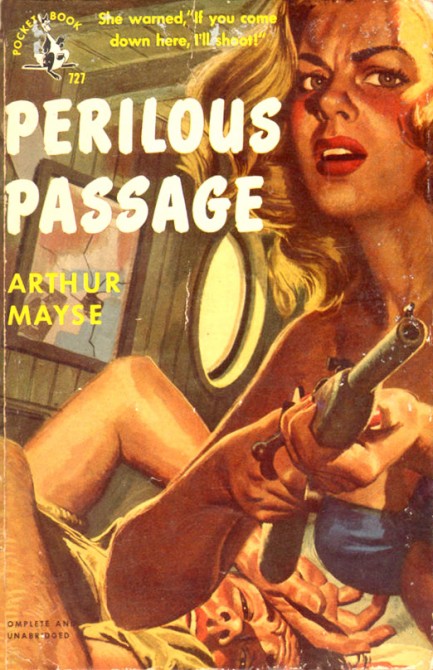
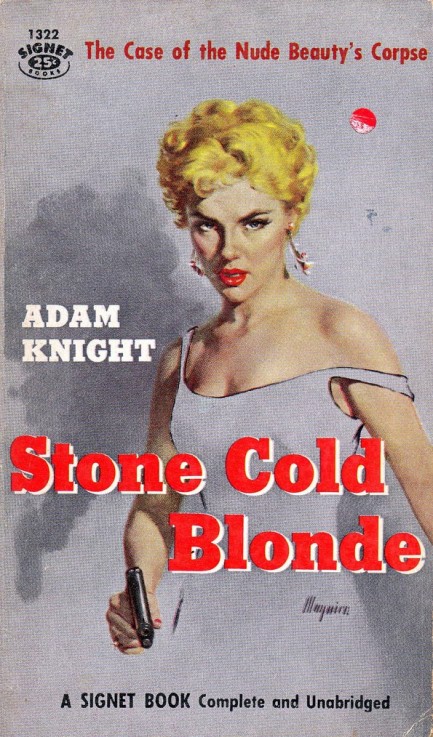
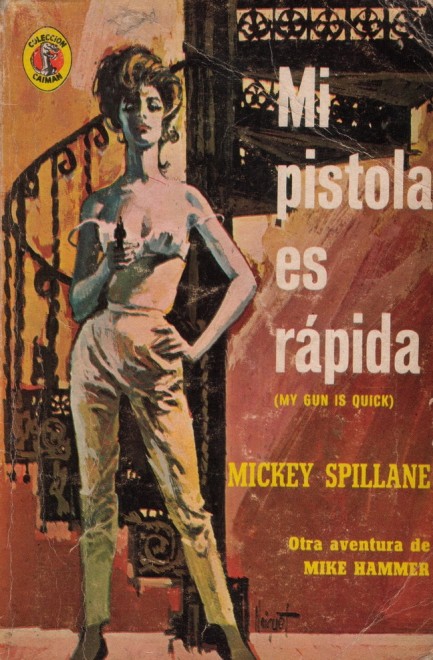
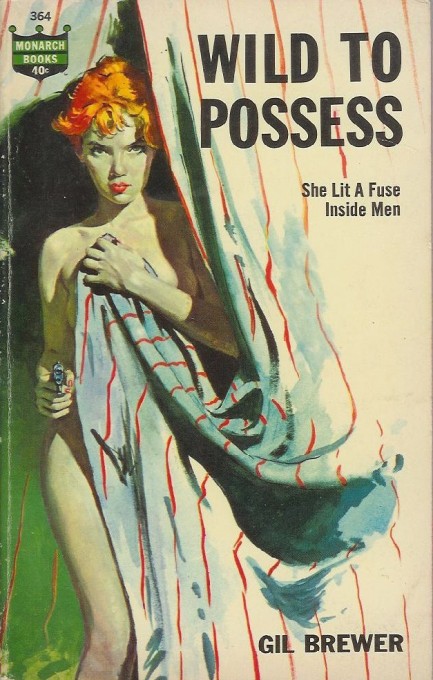
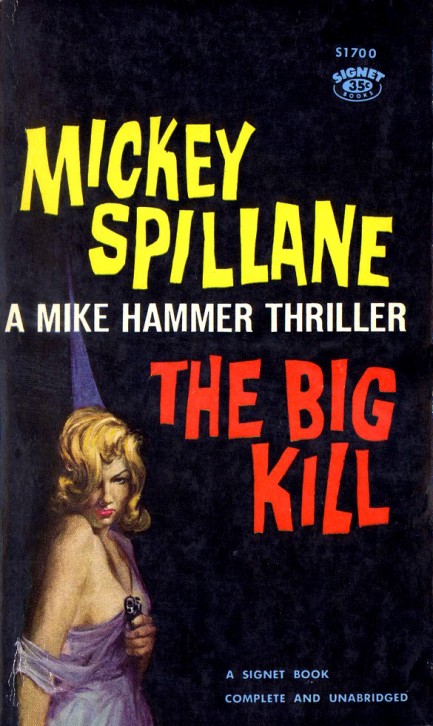
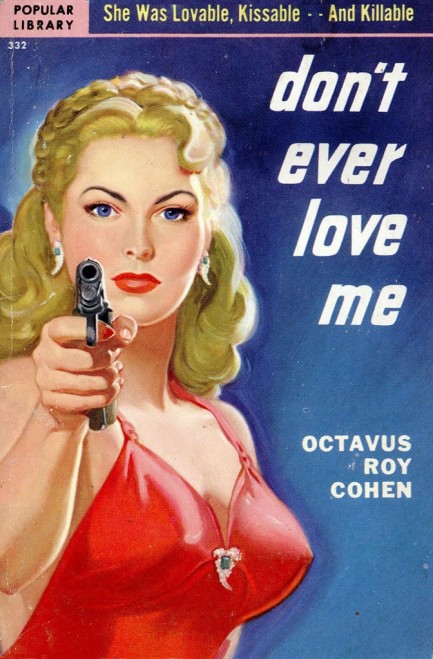
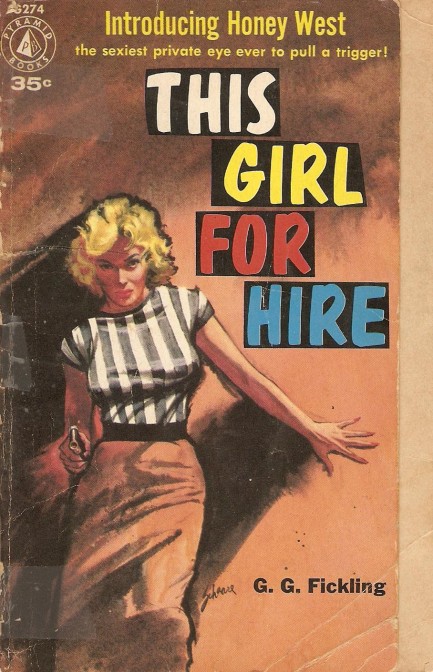
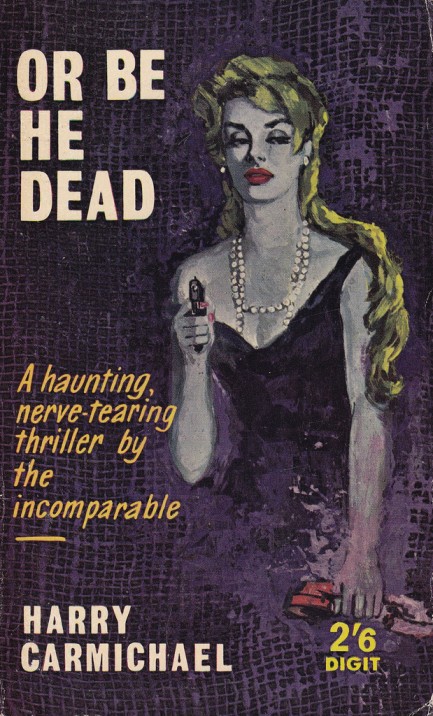
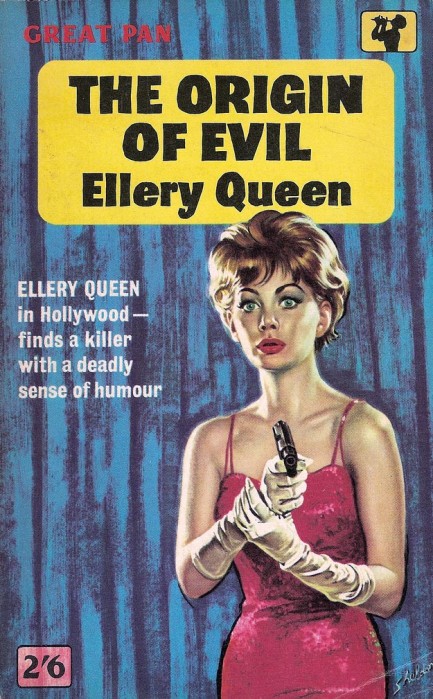
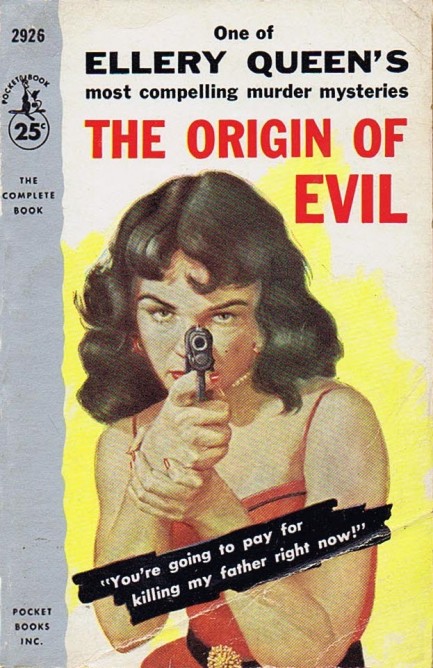
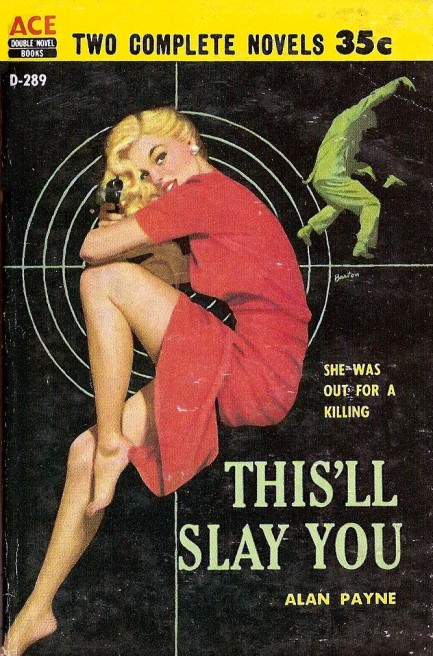
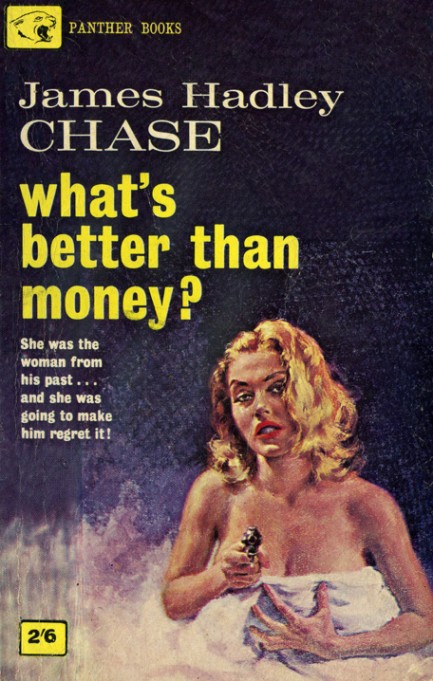
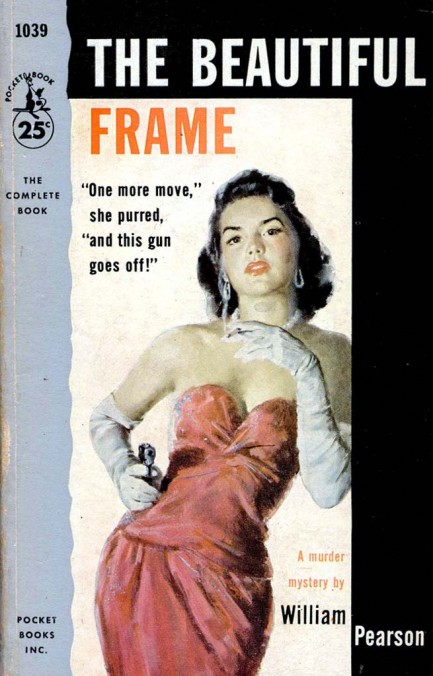


 Wilcoxson was arrested soon afterward in Maryland, and both robbers were convicted of murder. But where Wilcoxson got the chair (a sentence which was commuted to life upon appeal), Nussbaum got forty years, which made him eligible for parole.
Wilcoxson was arrested soon afterward in Maryland, and both robbers were convicted of murder. But where Wilcoxson got the chair (a sentence which was commuted to life upon appeal), Nussbaum got forty years, which made him eligible for parole.
















































































